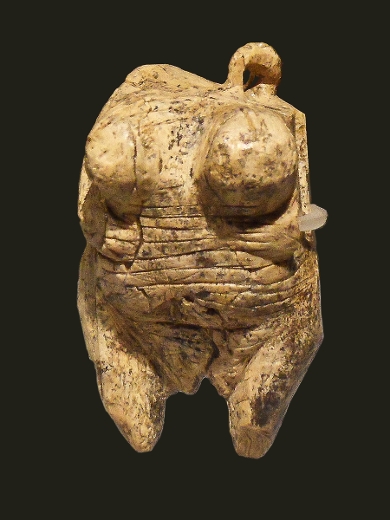
Population size fails to explain the evolution of complex culture
The logic seems inescapable indeed. The bigger the population, the higher the probability it contains an Einstein. Hence, bigger populations are more likely to develop complex culture.

But, what if Einstein shared his brilliant ideas with family only? What if tradition condemned deviations from the norm, however “brilliant”? Ingenious ideas would benefit a happy few or simply die, whatever the size of the population.
There is a growing consensus among archaeologists and anthropologists that the size of a population determines its ability to develop as well as to maintain complex culture. According to this line of reasoning, for instance, the fairly sudden appearance of behavioural modernity (e.g., complex technologies, abstract and realistic art, musical instruments) some 40,000 years ago would have simply been driven by growing population numbers. In the same vein, the inferred simplicity of Tasmanian aboriginal technology has been interpreted as the result of a reduction of Tasmanian populations after the island’s isolation from mainland Australia at the end of the last ice age.
Consensus compromised
This consensus view is however severely compromised by a paper just published in the Proceedings of the National Academy of Sciences by a research team including researchers from Eindhoven University of Technology, Simon Fraser University, La Trobe University and Leiden University refuting this demography hypothesis with a growing body of ethnographic evidence. The authors reveal critical flaws both in the theoretical models and the empirical evidence behind such demographic interpretations of cultural innovation. The models support a relationship between population size and cultural complexity only for a restricted set of extremely implausible conditions. A critical analysis of the available archaeological evidence suggests that there are simply no data to infer that behavioural modernity emerged in a period of population growth or that the size of a population directly influences the rate of innovation in a society’s technological repertoire. The Tasmanian record is also shown to be at odds with the predictions of the demographic models.
Back to the drawing board
Hence, archaeologists may need to go back to the drawing board. the idea behind the demography hypothesis is attractive in its simplicity. But complex questions by definition demand complex answers. For the evolution of complex culture, no satisfying answer is available yet. The question of the emergence of complex culture remains as elusive as ever.
Krist Vaesen, Mark Collard, Richard Cosgrove, and Wil Roebroeks
Population size does not explain past changes in cultural complexity
PNAS 2016 : 1520288113v1-201520288.
The project was a collaboration between researchers from Eindhoven University of Technology (the Netherlands), Simon Fraser University (Canada), La Trobe University (Australia) and Leiden University (the Netherlands).
The authors acknowledge support from the Netherlands Organisation for Scientific Research (NWO) (VIDI-grant 016.144312), the Social Sciences and Humanities Research of Canada, the Canada Research Chairs Program, the Canada Foundation for Innovation, the British Columbia Knowledge Development Fund, Simon Fraser University and the Australian Research Council (ARC Discovery Grant DP120100580).
